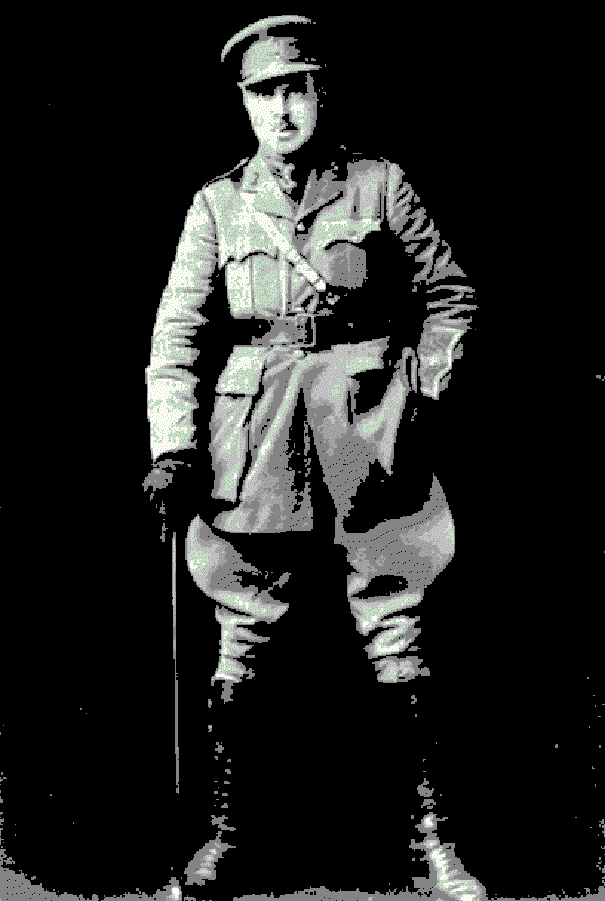
Vorticist Drama
Wyndham
Lewis as a Subaltern with the Royal Garrison Artillery, 1917, London.
Plays of Wyndham Lewis
|
Vorticist Drama |
| To avoid being incorporated into the machine of the collective, the Vorticist "Creates two dimensional, geometrical forms which affirms his superiority" (Weistien 32). In creating art the subject feels self-will, as if they were the puppeteer rather than the puppet. Vorticism of course may be present not just in experience, but also in the theme that the result of that experience produces. In the world of literature by such Vorticists as Wyndham Lewis, it is the theme that is prominent, as the reader distantly observes characters in Vorticist turmoil. One therefore could explore Vorticism fully by becoming a Vorticist, or only partially through passive observation of themes in works of literature. Wyndham Lewis went beyond the passive nature of literature however, however, where one can objectively view the theme of Vorticism, to create Vorticist, true participants in the world of Vorticism. Lewis tried to accomplish (It is up to the outsider whether or not he succeeded) his goal of creating Vorticists of the masses, by exploring the world of theatre. Lewis chose the world of theatre because it is an art form that involves the audience. Most of the time in theater the audience tends to just sit, but they are involved in a give and take with performers that creates an energy in the performance space. Likewise, to involve the outsider in the Vorticist experience, Wyndham Lewis wrote the plays Enemy of the Stars and the Ideal Giant. In these plays the theme of the Vorticists struggle exists, but the outsiders also experience the struggle themselves. |
Wyndham
Lewis as a Subaltern with the Royal Garrison Artillery, 1917, London. |
Plays of Wyndham Lewis |
Vorticist Drama |